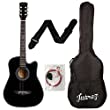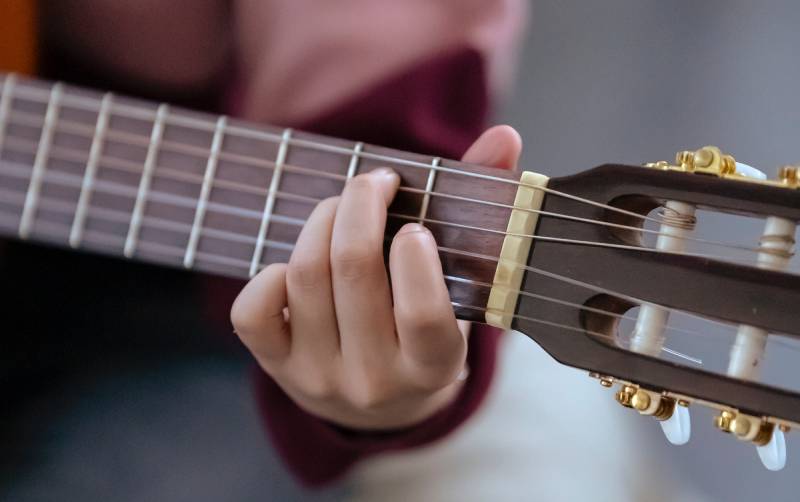
Beginners Weight Training: Lifting Heavy Metal
May 11, 2021
Gym Safety and Support…part 1
May 24, 2021- acoustic guitar lessons
- easy guitar lessons
- electric guitar beginner lessons
- first guitar lessons
- first lessons in guitar
- first thing to know about guitars
- guitar beginner lessons
- how to ear train with the guitar
- how to plan guitar learning
- how to practice guitar
- how to prioritize guitar learning
- how to start learning the guitar
- how to tune a guitar
- indian guitar lessons
- indian scales on guitar
- jam with the guitar
- learn guitar easily
- new to guitar
- party guitar playing
- starting guitar again
Know The Basics: Guitar
a Soulful journey begins right here on Six String Vibe.
Welcome and Namaste.
As the thumbnail suggests this is an informational post, with a linked video on YouTube, before the first guitar tutorial lesson.
YouTube link here: The Lesson b4 the Lesson
It is the homework done for a beginner and would get you started with making informed decisions, saving time and money in the process.
The videos and blogs go hand in hand and complement each other.
Of course, this blog will contain additional material which I won’t post on the tube. Guitar Tabs, Reviews, and detailed information are a few examples.
For tutorial and song playing lessons going forward, I would suggest watching the video and then coming over to the blog for the tabs and additional info.
So let’s get it on…
The Types of Guitar and Which to choose:
 Acoustic: No introduction is needed for this type of guitar. The most common and freely available. Used by most as their first guitar, acoustics are low-maintenance hardy instruments that can endure a bit more than an electric, especially those with floating bridge setups. Good for starting out or if your interest is purely the acoustic and finger-style genre of music. The cost is low and no additional equipment is needed. Just pick and play.
Acoustic: No introduction is needed for this type of guitar. The most common and freely available. Used by most as their first guitar, acoustics are low-maintenance hardy instruments that can endure a bit more than an electric, especially those with floating bridge setups. Good for starting out or if your interest is purely the acoustic and finger-style genre of music. The cost is low and no additional equipment is needed. Just pick and play.
 Electric: The heart-throb of guitars. Fixed bridge setups are easier to maintain than floating bridges or Floyd Rose bridges. Electrics are easier on the fingers and elbows in the long run as they do not require as much pressure to play compared to acoustics. However, unlike acoustics, they do require support gear like stage amplifiers and/ or effects processors. This brings the initial cost up for a beginner. If you aim to get into rock, blues, or the alternative kind of high distortion/ high gain-based playing, it’s the only way to go.
Electric: The heart-throb of guitars. Fixed bridge setups are easier to maintain than floating bridges or Floyd Rose bridges. Electrics are easier on the fingers and elbows in the long run as they do not require as much pressure to play compared to acoustics. However, unlike acoustics, they do require support gear like stage amplifiers and/ or effects processors. This brings the initial cost up for a beginner. If you aim to get into rock, blues, or the alternative kind of high distortion/ high gain-based playing, it’s the only way to go.
 Semi-Acoustic: Well this kind of guitar tries to bridge the gap between the acoustic and electric. If it’s within budget, go for it. It will give you more options in terms of sound and will feel different. Keep in mind though it can never replace a true electric.
Semi-Acoustic: Well this kind of guitar tries to bridge the gap between the acoustic and electric. If it’s within budget, go for it. It will give you more options in terms of sound and will feel different. Keep in mind though it can never replace a true electric.
One more type of guitar is the CLASSICAL GUITAR. It is surely not a beginner’s instrument and only for those who wish to perform classical compositions written for the guitar.
Variations also exist, the most common being the 12 string guitar. Again, not a beginner’s choice.
Please note: The above-linked examples are beginner guitars in their genre, good value for those on an initial budget. For extended range please check the music product page.
String Choice:
 For someone just starting there is only one aspect of strings which they need to keep in mind… string thickness/ Gauge.
For someone just starting there is only one aspect of strings which they need to keep in mind… string thickness/ Gauge.
In the example shown:
85/15 Bronze acoustic guitar strings offer a bright, bell-like tone. The 85/15 bronze name is a misnomer in the music industry as the metal wrap wire composition is 85% copper and 15% zinc, which is brass. Bronze is technically an alloy of copper and tin.
One can ignore the tension parameter in the picture as it is mostly for the luthier.
We need to focus on the diameter of the strings, the common unit in the conversation being inches.
The E: 1st string is given as “.011” in. This is what we keep in mind. All string diameters need not be memorized.
A “.011 in” measurement for the 1st string would put the set under the Light Gauge category.
A “.009 in” measurement for the 1st string would be the Super Light Gauge
I would recommend using the above two gauge sets. Remember though, although the principle of string gauge remains the same, acoustic and electric strings differ. In other words, buy acoustic strings for acoustic guitars and electric strings for electric guitars just ensure the 1st string “in” measurement is either .009 or .011 in.
If the string packaging mentions something on the lines of “super light top/ med bottom”, do not choose it for now as these are MIXED sets for specific use. Regular sets would not have any such mention.
WHY?—
Lighter gauge strings are easier to play (barre chords) and do not overwork the wrist and elbow tendons especially during long playing sessions.
 More importantly, it reduces finger abrasion and pain when starting off learning the guitar as the soft skin of the fingers needs to toughen up. It is a part and parcel of playing the guitar and if it were so bad there wouldn’t be so many guitar players around. However, it does hurt a bit, and using lighter gauge strings does help.
More importantly, it reduces finger abrasion and pain when starting off learning the guitar as the soft skin of the fingers needs to toughen up. It is a part and parcel of playing the guitar and if it were so bad there wouldn’t be so many guitar players around. However, it does hurt a bit, and using lighter gauge strings does help.
BTW…the pic is of my fingers, about two weeks into getting back in the groove. It’s all Good.

There are a variety of string sets in the market which are marketed by focusing on the alloys and metals used in manufacturing, kind of winding used to form the string, resultant tonality of the set (bright tone or mellow tone for example), and string thickness. There are even mixed sets.
Over years of dedicated playing when one’s ears are tuned to every frequency of sound emanating from a guitar, YES, these differences can be heard and selections made according to the kind of playing style, tonality requirement, and genre of music.
Plectrums:
We all need one to play guitar except for fingerstyle playing. We will get into fingerstyle playing but it will not be the only style of playing we will practice.
Plectrums/ Plecks/ Picks follow the same principles of string sets, albeit without any effect on the fingers.
Examples of the different thicknesses Picks are available in are:
0.58mm/ 0.71mm/ 0.81mm/ 0.96mm/ 1.20mm/ 1.50mm Guitar Picks.
The thickness of the Pick would suit the following styles of playing:
Thinner= Easier to strum chords and play rhythm especially on acoustic guitars.
Thicker= Better for playing individual notes and power-chord melodies.
 Here is the good part, they are relatively inexpensive unless you opt for custom or signature options like Pink Floyd Plectrums (although amazing..).
Here is the good part, they are relatively inexpensive unless you opt for custom or signature options like Pink Floyd Plectrums (although amazing..).
So I would suggest, choose a mixed set and try all of them out. No one can tell you how you feel, so over time, you will have your preference as to which pick to use for the music you are playing.
And there you have it…
Technically this is all one needs to start off on a musical journey. It’s all I had years ago, an acoustic guitar and a Pick.
For those choosing to start with an electric guitar, without going into details which I will leave for later, a very cost-effective and quiet (headphone compatible) option to the “neighbor instigating” stage amplifier is the in-pic:
AmiciSound AROMA Mini Portable 3W Guitar Amplifier Recorder Speaker with USB Cable to Recharge.
A really good buy which I use to play distortion at 1 am. Need I say more…
With regards to guitar cables, please have a look at the recommended cables on my product page. You will find options which suite your price range and requirements.
There are a few more points worth mentioning which delayed my progress and learning considerably, and if I was fortunate to know them at that time it would have made me a better player quicker.
Let us talk about them in detail in Part two of Know The Basics.







